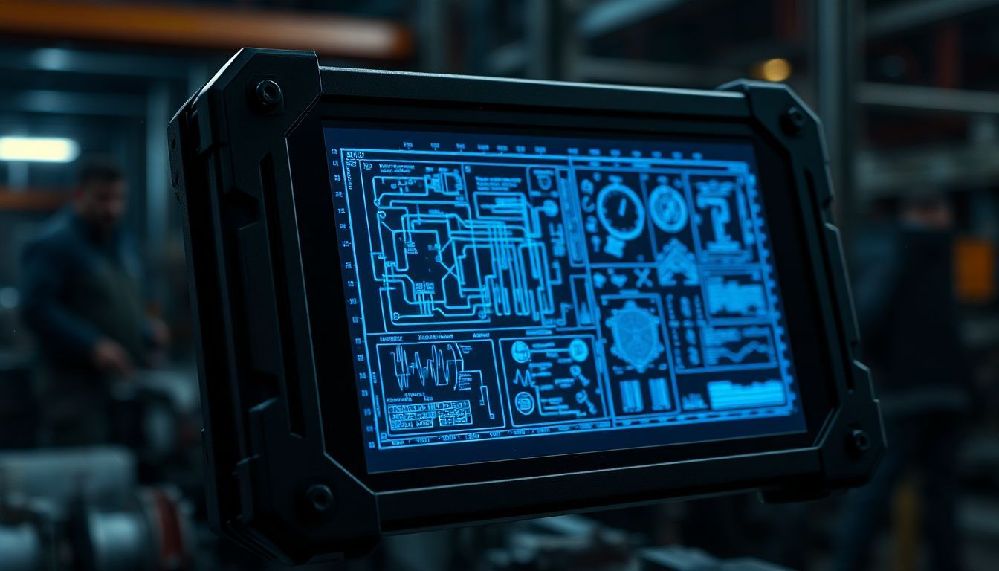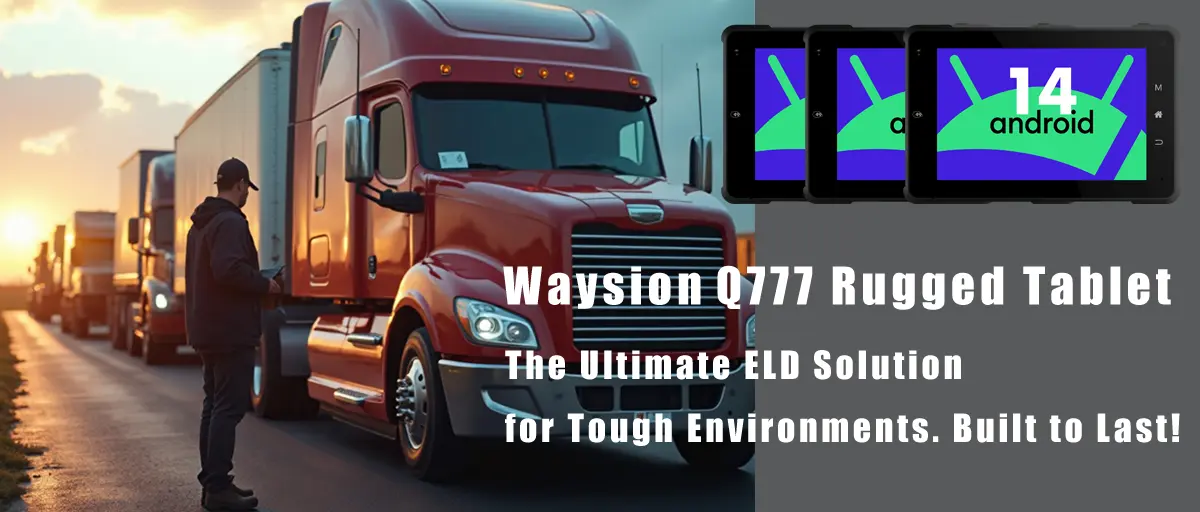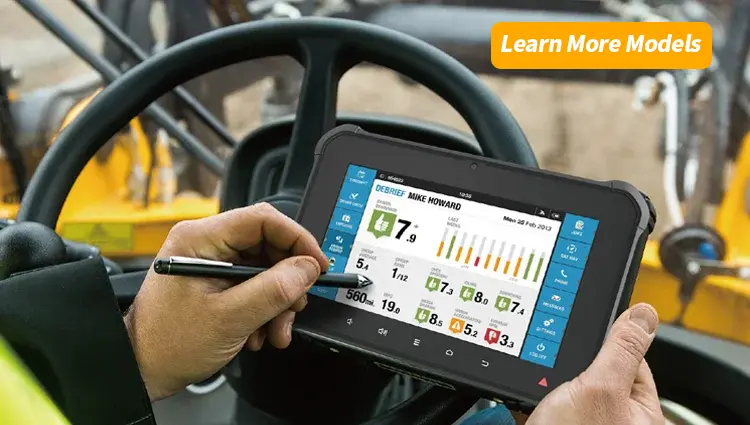The Definitive Guide to Industrial Tablet Computers: Powering Modern Operations
Imagine you’re in a noisy factory. Dust swirls in the air. Workers hustle between machines. Your regular tablet slips from a sweaty hand and cracks on the concrete. That’s no way to run a business. Industrial tablet computers fix that mess. They stand up to rough spots like heat, drops, and spills. Unlike your home iPad, these beasts handle real work.
These devices pack extra armor for tough jobs. Think of them as the pickup trucks of tech—built for hauls, not highways. They boost efficiency in places like factories, truck yards, and repair sites. In Industry 4.0, they link machines and people with smart data. You cut wait times and spot errors fast. That means more cash from less hassle. Sectors from making parts to shipping goods rely on them. The payoff? Less machine downtime and spot-on records that save bucks.

Section 1: Understanding Industrial Tablet Specifications and Durability
Industrial tablets shine in specs that matter for hard use. You need gear that won’t quit when things get wild. Let’s break down what makes them tick.
IP Ratings and Environmental Resistance Explained
IP ratings tell you how well a tablet fights off dirt and water. Take IP65. It blocks dust and handles water jets from any angle. IP67 goes further. Your tablet can sit under three feet of water for half an hour without a fuss.
These ratings save your day in wet spots like food plants or rainy fields. No more fried circuits from a splash. Workers keep going without tech fails. Studies show sealed devices last twice as long in moist air.
MIL-STD Certification: The Benchmark for Ruggedness
MIL-STD-810G or H sets the gold standard for toughness. These tests mimic battle conditions. Devices survive drops from four feet onto plywood. They shake off vibes from bumpy rides.
Thermal shocks hit next— from freezing cold to scorching heat in seconds. Rugged tablets outlast cheap ones by five years on average. One report from a tech firm notes 80% fewer breaks in daily grind. You get peace of mind in spots where slips happen.
Screen Technology for Challenging Visibility
Bright screens make all the difference outdoors or under lights. Look for 1,000 nits or more. That beats glare like sunglasses on a sunny drive. Glove touch lets you swipe with work gloves on—no peeling them off.
Anti-glare coatings cut reflections. Chemically strengthened glass resists scratches from tools. You read maps or checklists clear as day, even in direct sun. Factories report 30% faster tasks with visible displays.
Section 2: Core Components Driving Performance in Harsh Settings
Power under the hood keeps operations smooth. Industrial tablets run apps that crunch numbers on the fly. You stay ahead without lags.
Processing Power and Memory Optimization
Pick CPUs like Intel Core i5 for heavy lifts. They handle CAD drawings or remote checks without sweat. Embedded chips suit simpler tasks but save juice.
RAM hits 8GB or 16GB for juggling apps. Multitask on site—pull up blueprints while logging notes. In field work, this setup cuts errors by half, per user surveys. Your team wraps jobs quicker.
Battery Life and Power Management Strategies
Long batteries mean no mid-shift charges. Aim for 10 hours or more. Hot-swap packs let you switch without shutting down—like fueling a truck on the go.
Extreme cold drains power fast. Keep spares warm in pockets. Heat shortens life too—shade them when possible. Tips like these stretch cycles to 1,000 charges. Warehouses see full days without plugs.
Connectivity Essentials: Beyond Wi-Fi
Wi-Fi alone won’t cut it in big yards. 5G or LTE keeps you linked in dead zones. GPS nails locations down to feet for truck routes.
Ports like RS-232 link old machines. Ethernet plugs into wired nets for steady speeds. No consumer tablet packs these. Logistics firms track loads in real time, slashing lost items by 40%.
Section 3: Specialized Features for Operational Enhancement
Extra tools turn tablets into workhorses. They grab data right where you need it. Let’s see how they amp up your flow.
Data Capture Tools: Integrated Scanning and Imaging
Built-in scanners read 1D or 2D codes in a flash. RFID tags track parts without line-of-sight. Cameras snap clear shots for checks—13MP or better.
Picture a shipping hub. Workers scan boxes on the move. No separate gadgets mean faster counts. One logistics outfit cut inventory time by 25% this way. Errors dropped too.
- Barcode scanning: Handles damaged labels.
- RFID integration: Counts stock in bulk.
- Camera use: Logs defects with timestamps.
Ergonomics and Mounting Solutions
Light weight and smart grips prevent arm strain. Balanced designs feel good for hours. Handles snap on for one-hand use.
Mounts lock tablets in place. VESA arms fit desks or walls. Vehicle docks grip forklifts tight over bumps. Wearable straps free hands for climbs. Field techs praise these for safe, easy access.
Operating Systems and Security Considerations
Windows IoT runs factory software smooth. Android suits mobile apps—pick certified for updates. Linux fits custom needs in tight spots.
Security locks data tight. Hardware chips encrypt files on board. Patches fix holes quick. In plants, this guards secrets from hacks. Breaches cost firms millions; these prevent that.
Section 4: Key Industry Applications and Use Cases
Tablets fit right into daily ops across fields. They solve real pains with smart tech. You see gains fast.
Manufacturing and Assembly Lines (Industry 4.0)
On lines, tablets link to SCADA for machine watch. Pull up instructions on screen— no paper hunts. Quality stops get instant logs.
Real-time inputs flag issues early. Downtime shrinks by 20%, says one auto maker. Workers follow steps with AR overlays. Output jumps.
- Machine monitoring: Alerts for jams.
- Work guides: Step-by-step visuals.
- QA checks: Photo proofs tied to records.
Field Service Management and Remote Maintenance
Techs load schematics offline. Shoot repair videos for records. Sync reports later—no spotty signal woes.
Tools like these halve fix times. A utility firm cut visits by 35% with mobile logs. You bill faster and keep clients happy.
Logistics, Warehousing, and Inventory Control
In cold stores, tablets track temps and stock. Outdoor hauls use GPS for routes. Proof-of-delivery snaps seal the deal.
Harsh weather? They hold up. One fleet optimized paths, saving 15% on fuel. Counts stay accurate in chaos.

Section 5: Selection Criteria and Purchasing Best Practices
Picking the right one takes thought. Match it to your needs. Avoid regrets down the line.
Defining Requirements: Beyond Surface-Level Durability
List must-haves first. Temp range? -20°F to 140°F covers most. Ports needed? USB-C plus serial for legacy gear.
Software life matters—pick ones that update for years. Test in your space. A checklist keeps buys smart.
- Map your daily tasks.
- Check compat with current tools.
- Budget for extras like cases.
Total Cost of Ownership (TCO) Analysis
Upfront, they cost more—$1,000 versus $300 for basics. But replacements add up. Rugged ones pay back in two years.
Warranties hit five years. On-site fixes beat shipping hassles. TCO drops 50% over cheap swaps, per studies. Think long game.
Future-Proofing Your Investment
Modular designs let you swap parts. OS paths ensure upgrades. Pick brands with 10-year support.
This keeps gear fresh without full buys. Industries like oil see tablets last a decade. Your setup stays current.
Conclusion: The Indispensable Tool for Operational Excellence
Industrial tablet computers deliver rock-solid reliability. They guard data and speed up work. Productivity soars with less waste.
These aren’t extras—they’re key to linking shop floors with digital systems. Invest now for gains that stick. Ready to upgrade? Check top models and see the difference in your ops.








